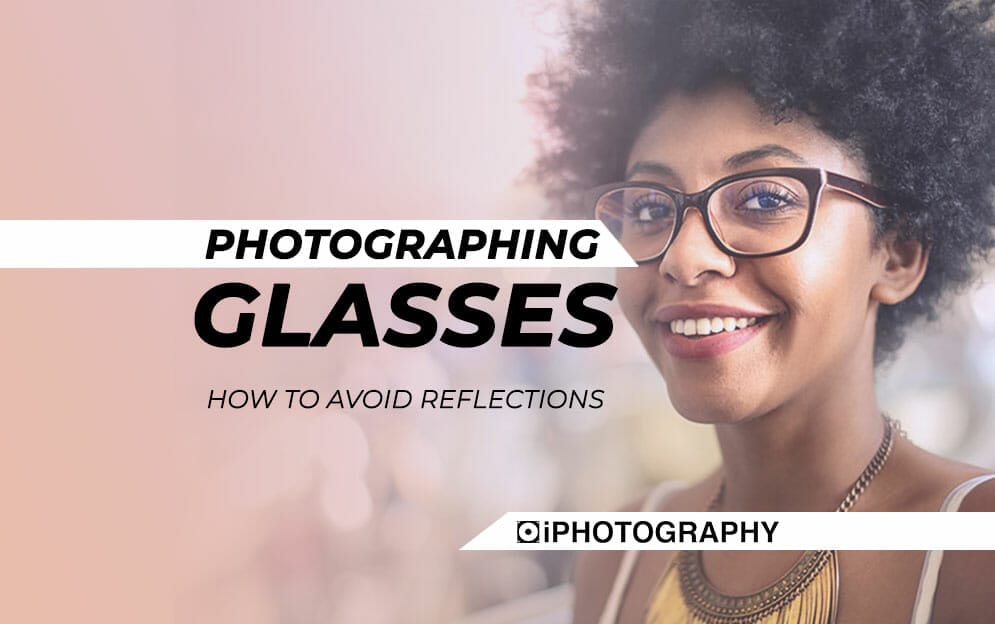If you’re having trouble with photographing glasses in your portraits then we’ve got some brilliant tips on how to avoid those annoying reflections, flares and specular highlights.
Falling short of asking your subject to take their glasses off, as a portrait photographer, you’ll need to be conscious of distracting reflections hitting those lenses.
Sure, it is easier to ask your subject to whip them off, but in doing so you’re potentially changing a familiar part of your subject’s overall look, which isn’t the right approach to a portrait.

With the million other things you’ve got on your mind when taking portraits, looking out for reflections on glasses should be in the top 5 (when it’s relevant).
Overlooking where reflections of light sources fall can cause a nightmare when it comes to editing. Even a good editor can find it takes a while to remove an unsightly reflection – so save yourself time and get in perfect in camera.
Reflections tend to occur when your light is between 0-45 degrees to your subject’s face. All it takes is a little tweak to your subject’s position, or the light, to solve this. If you’re light source is fixed, then just angle your subject away from the light.
Always watch the glasses during any head movement to ensure the reflections aren’t visible.
See these 2 setups below of what lighting positions can (and will avoid) reflections.


Drop shadows are another problem when photographing glasses. The use of any light in close proximity will cause a consequential shadow – and for a portrait this means it will cast across the face.
Drop shadows can make the eyes darker, when not adjusted, as well as just being plainly unsightly.
The best work around is to use 2 lights, on opposite sides, to counteract the shadow caused by the other. Soft light works better at minimising the problem, so diffuse where possible.
If you’re limited to one light, try to keep the light at eye level. Having the light substantially above or below eye level will be enough of an angle to cause a directional shadow.

Another by-product of photographing glasses comes in the form of strong gleams of light bouncing off the metallic rims of glasses. These micro reflections are called specular highlights. They can add an element of style to your portrait without being distracting, but it depends on what you’re trying to achieve.
Either way, watch out for specular highlights when photographing glasses, they can be used to your advantage. These strong reflections are caused by hard light.
To reduce their appearance, diffuse your light source with a plain white bed sheet for example.

Candid portraits are the most challenging when photographing glasses as the constant movement requires you to be alert to every change. My advice would be taking lots of shots in a candid session at different positions.
The eyes are the window to connecting with a good portrait. Having them unclear or hidden makes it harder for an audience to engage with your photograph.
Remember to consider the position of your subject to the light. Take up positions where the light isn’t directly facing them and do your best!
Discover the BEST way on how to clean a camera sensor using swaps, rocket blowers and pencil brushes to give your shots a dust-free finish!
Capture the magic of the night with our beginner’s guide to night photography. Learn tips and techniques for stunning results.
Master the art of solar eclipse photography with expert tips on equipment, settings, and precautions for stunning celestial images.
Learn the basics of photography – fast – with our FREE 60-Second Photographer online course. Each class is short and sharp with simple, actionable steps that give you immediate results.
x 30 lessons

© iPhotography™
Become a confident and competent photographer in less than 30 minutes!
Before you leave, make sure you’ve secured your FREE online photography course (worth £29.99)
Each class is just 60-seconds or less making it the fastest and easiest way to learn photography!